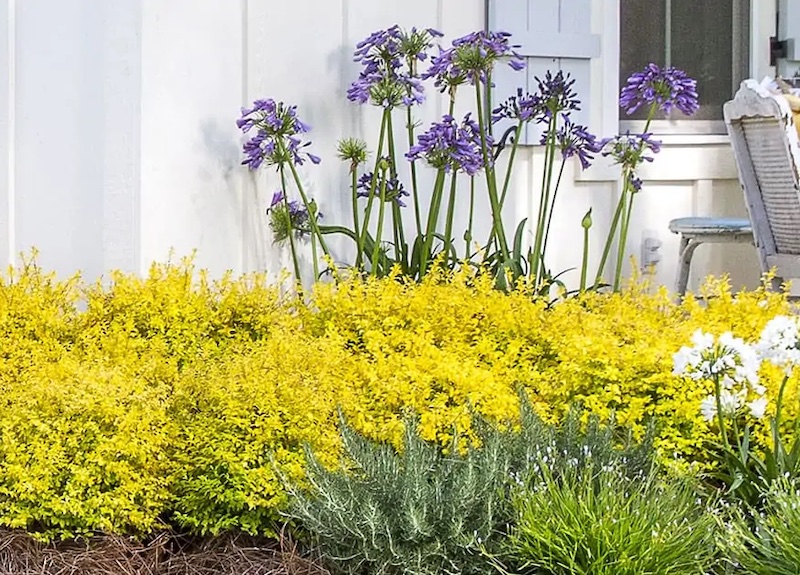Usual Agapanthus Problems and How to Solve Them
Usual Agapanthus Problems and How to Solve Them
Blog Article
Grasping the Art of Agapanthus Treatment: Vital Steps for Healthy And Balanced Growth and Lively Blossoms
In the world of gardening, the cultivation of agapanthus stands as a gratifying venture for those who seek to support these elegant flowering plants. With their striking blooms and elegant foliage, agapanthus has caught the attention of gardeners worldwide. Nevertheless, accomplishing ideal growth and dynamic blossoms needs a nuanced technique that includes various vital actions. From choosing the right variety to grasping trimming techniques, the journey in the direction of cultivating flourishing agapanthus plants is complex and holds the crucial to unlocking the complete possibility of these botanical gems.

Choosing the Right Agapanthus Selection

When picking the appropriate Agapanthus variety for your yard, take into consideration elements such as environment suitability, flower shade, and development practice. Furthermore, consider the environment in your area to ensure the Agapanthus selection you pick can thrive in your particular problems. Understanding the development practice of different Agapanthus varieties is important for appropriate positioning within your garden.
Suitable Planting Conditions
Taking into consideration the optimal ecological requirements is crucial for effective Agapanthus farming. Agapanthus plants are delicate to chilly temperature levels and must be protected from frost throughout winter months.
To make certain healthy and balanced development and vivid blossoms, plant Agapanthus bulbs at a depth of about 2-4 inches and space them 8-12 inches apart. Mulching around the base of the plants helps retain dampness and subdues weed growth.
Watering and Fertilizing Tips
Keeping proper dampness levels and providing vital nutrients are crucial elements in the treatment routine for Agapanthus plants. It is vital to strike a balance when it comes to sprinkling Agapanthus. These plants favor regularly damp dirt but are at risk to root rot if overwatered. Throughout the expanding period, water deeply once a week, guaranteeing the dirt is well-draining to protect against waterlogging. In hotter environments or throughout periods of drought, more constant watering might be needed to maintain the dirt equally damp. Nevertheless, reduce watering in the winter months to stop waterlogged conditions.
Fertilizing Agapanthus is crucial for promoting healthy growth and respected blooms. Apply a balanced plant food, such as a 10-10-10 formula, in the early springtime as new growth arises. By following these watering and fertilizing ideas, you can great post to read ensure your Agapanthus plants prosper and create lively, long-lasting flowers.
Trimming Strategies for Agapanthus
Pruning Agapanthus plants at the proper times and with correct techniques is critical for preserving their health and wellness and advertising optimal growth and flowering. The excellent time to prune Agapanthus is in late winter season or very early springtime prior to new development emerges.
For flowered stems, wait till the blossoms have withered and after that trim them back to the base. This not just cleans up the plant's appearance however additionally urges the development of brand-new blossom buds. Deadheading invested flowers can additionally reroute the plant's energy into producing even more blossoms instead than establishing seeds. Nevertheless, if you wish to collect seeds for proliferation, leave some flowers to mature and dry on the plant.
Remember to utilize clean, sharp devices to make exact cuts and reduce the threat of presenting illness. Agapanthus. Regular pruning will certainly assist keep your Agapanthus looking healthy and balanced and neat while guaranteeing an abundant screen of beautiful blooms
Handling Typical Parasites and Illness
After guaranteeing appropriate trimming methods for Agapanthus, it is vital to deal with typical bugs and illness that can influence the health and wellness and vigor of these plants. Agapanthus plants are usually sturdy yet can still succumb to certain issues. One common parasite that influences Agapanthus is the Agapanthus gall midget. This tiny, orange fly lays its eggs in the vegetation, leading to altered development and blossom buds that fail to open up. To combat this bug, prune and ruin any afflicted plant parts and consider making use of insecticidal soap.
Furthermore, this website Agapanthus plants can experience from root rot if they are planted in poorly draining dirt. By being watchful and taking timely action against pests and conditions, you can aid your Agapanthus plants flourish and generate dynamic blooms. Agapanthus.

Final Thought
In conclusion, grasping the art of agapanthus treatment includes choosing the best variety, giving suitable planting conditions, proper watering and fertilizing, appropriate pruning methods, and addressing common parasites and conditions. By adhering to these necessary steps, you can additional reading guarantee healthy and balanced development and vibrant blossoms for your agapanthus plants. Bear in mind to on a regular basis check and keep your plants to advertise their total well-being and longevity.
To guarantee healthy development and vibrant blossoms, plant Agapanthus light bulbs at a deepness of about 2-4 inches and room them 8-12 inches apart. By following these watering and feeding tips, you can ensure your Agapanthus plants thrive and create lively, long-lasting flowers.
One common bug that affects Agapanthus is the Agapanthus gall midget. In addition, Agapanthus plants can suffer from root rot if they are planted in improperly draining pipes soil. By complying with these essential steps, you can ensure healthy growth and vivid blossoms for your agapanthus plants.
Report this page